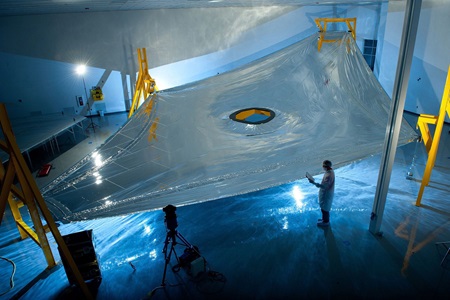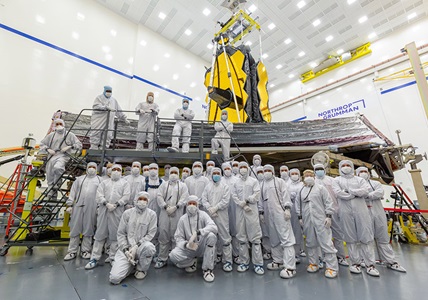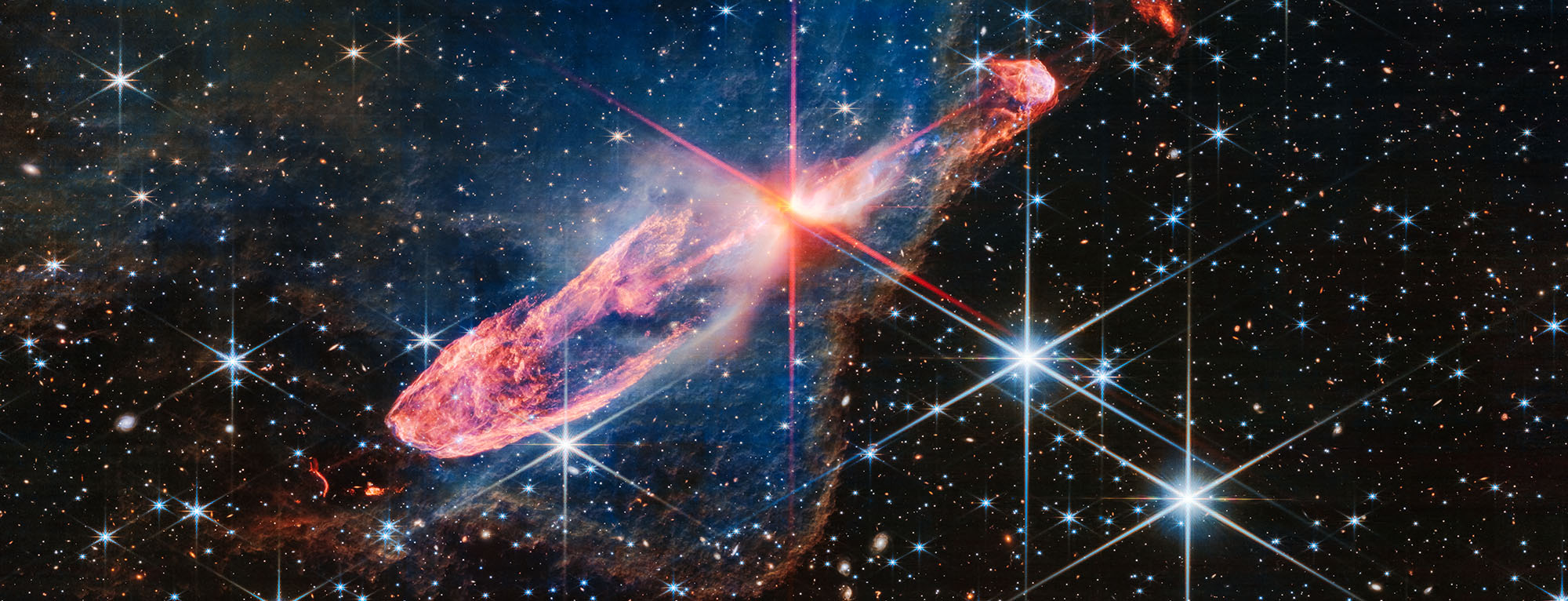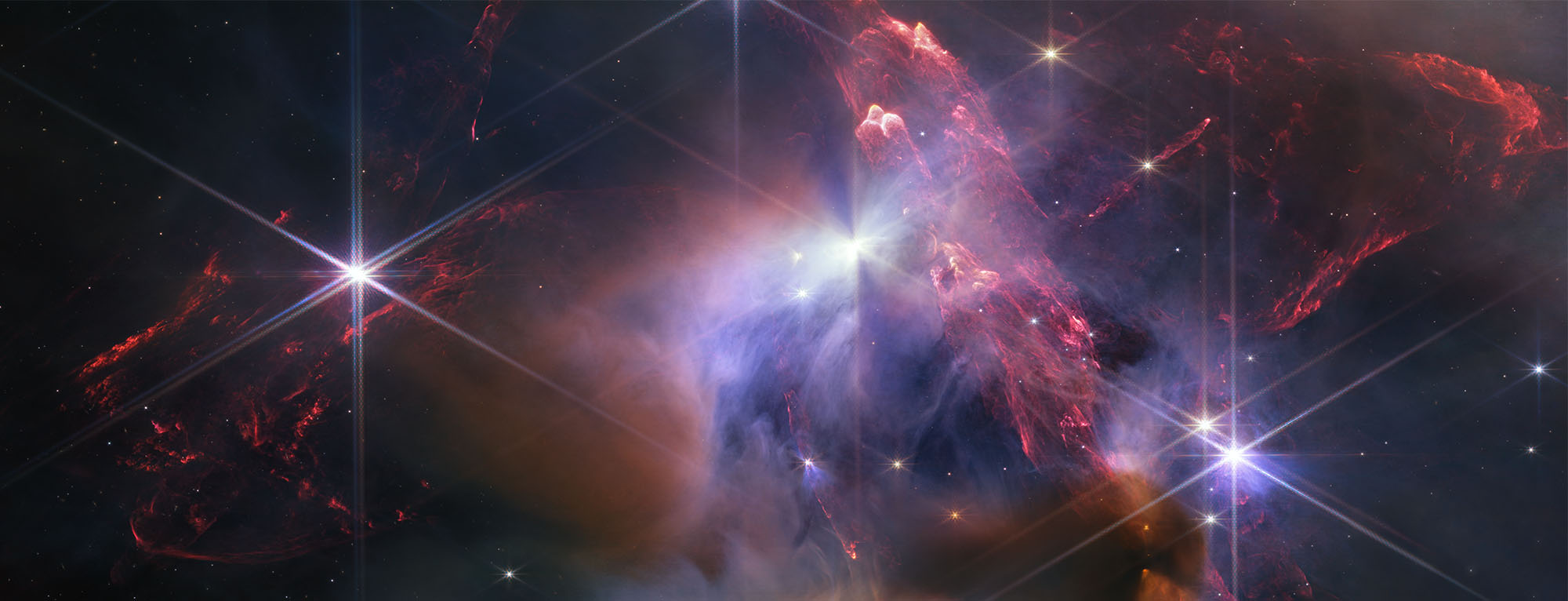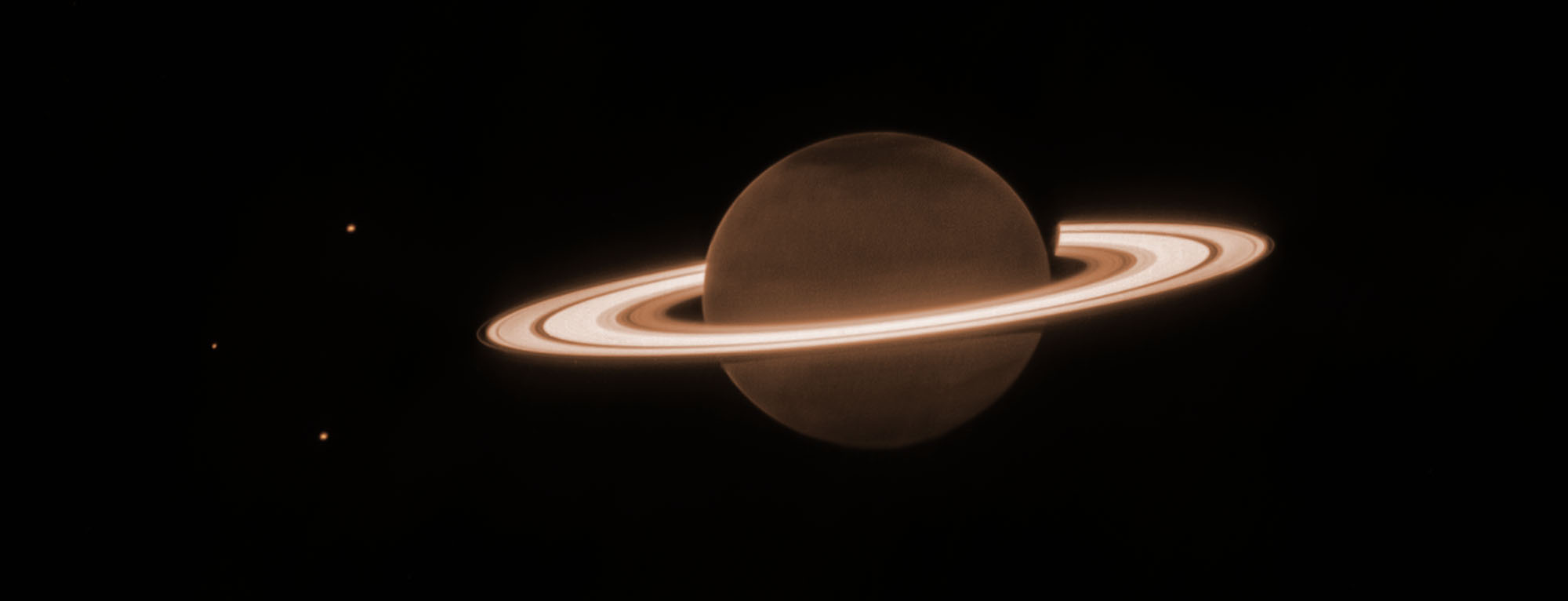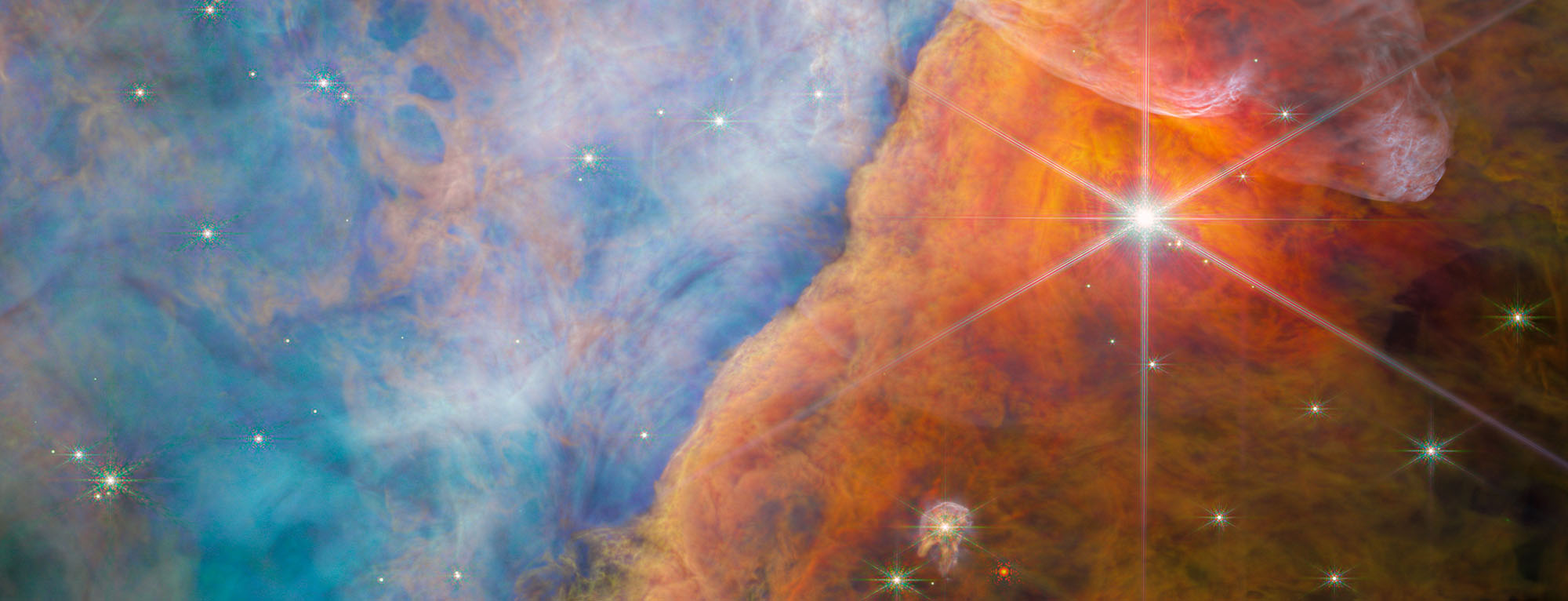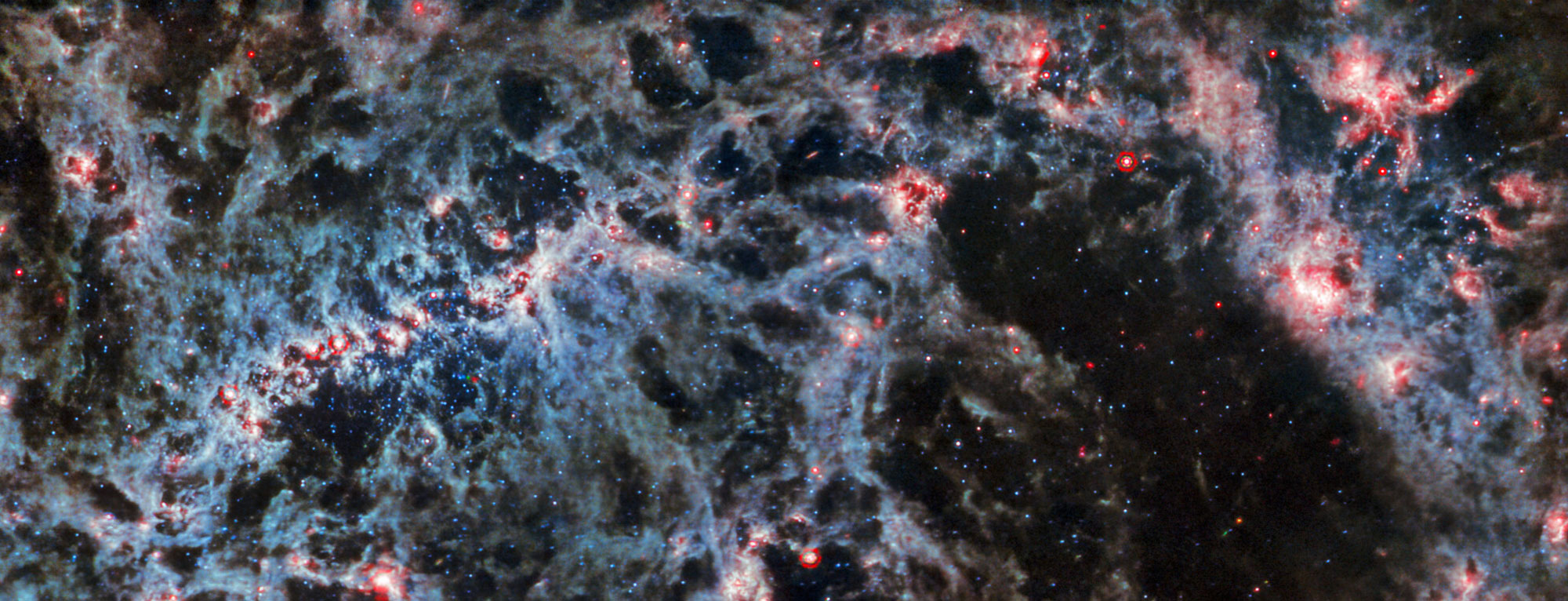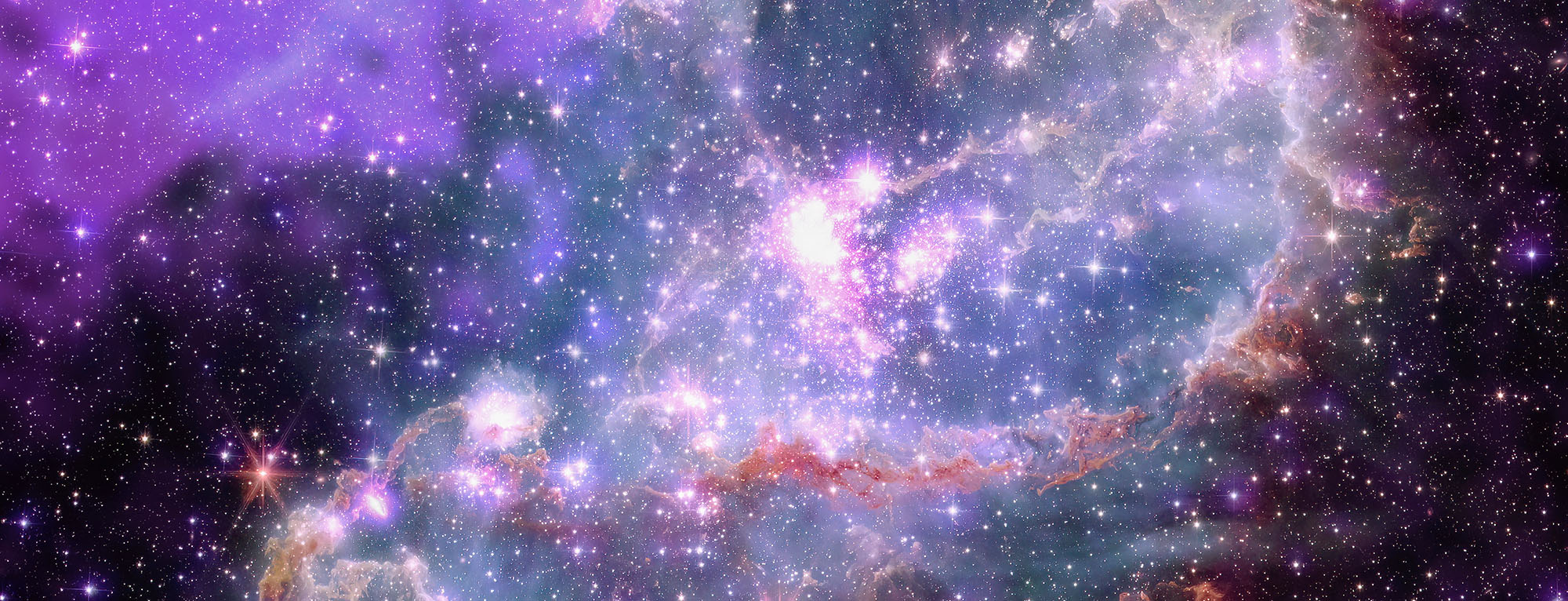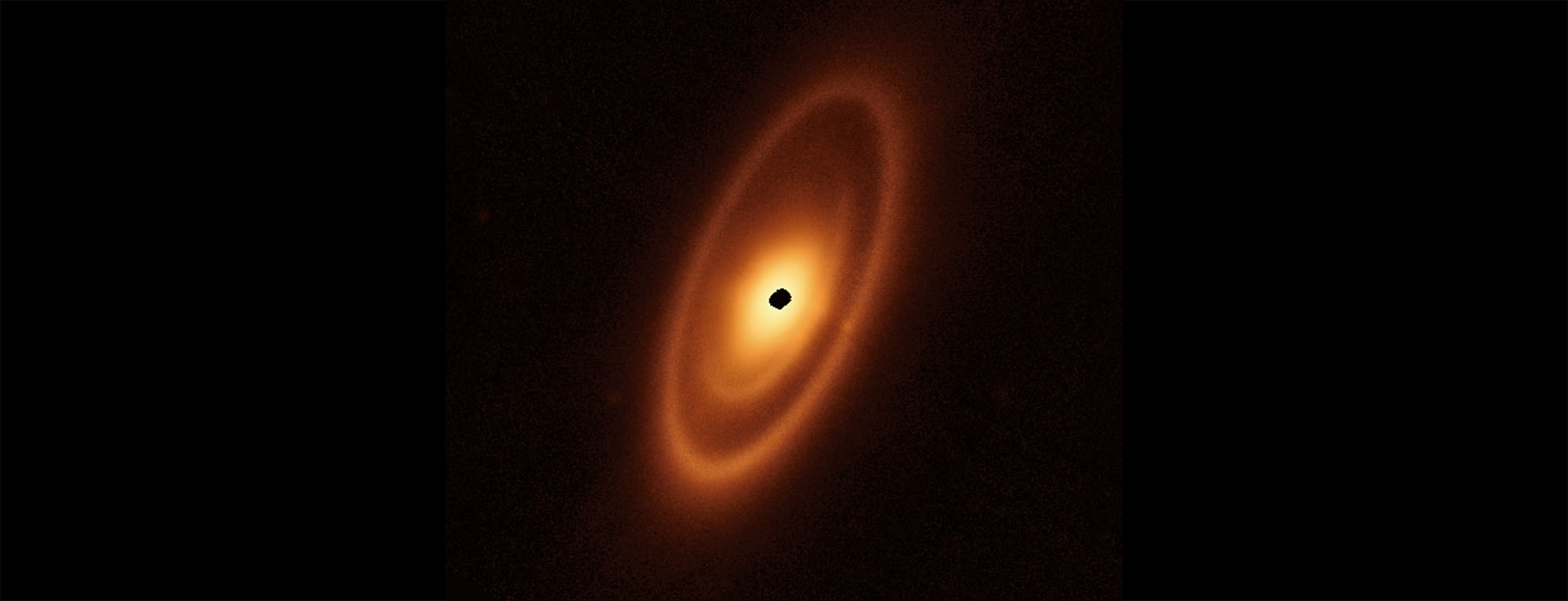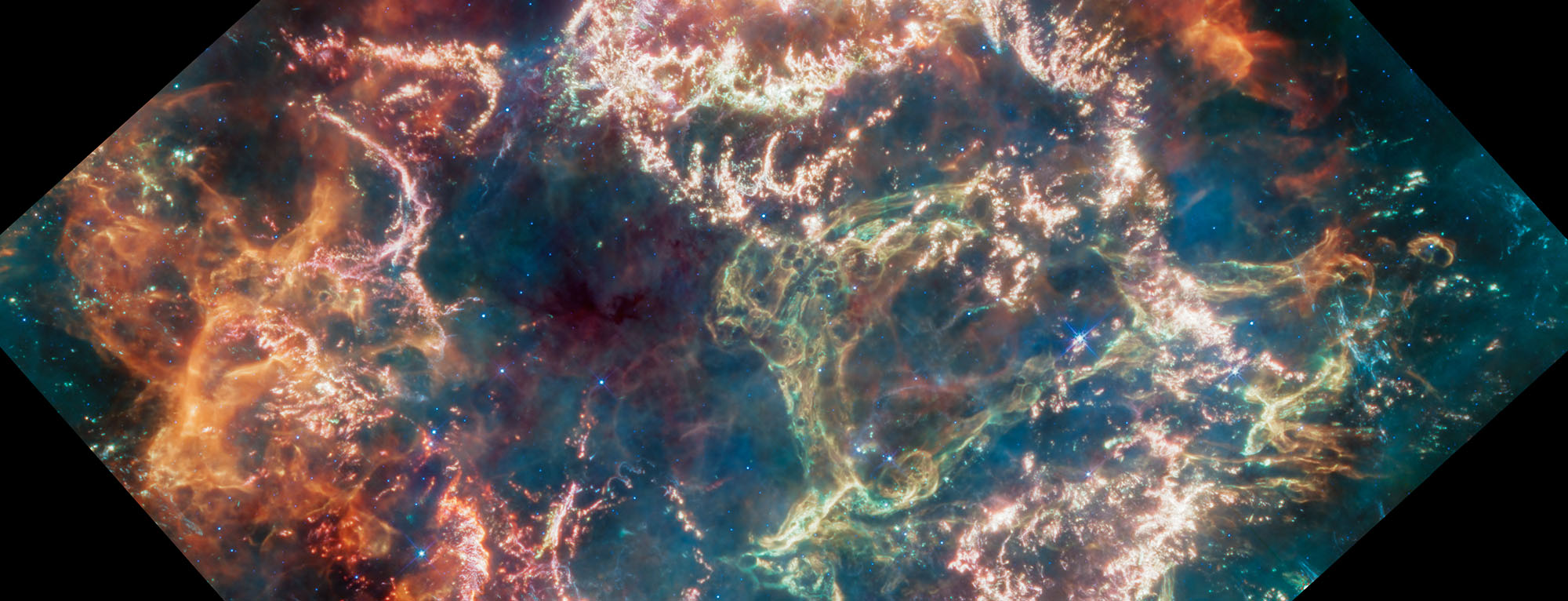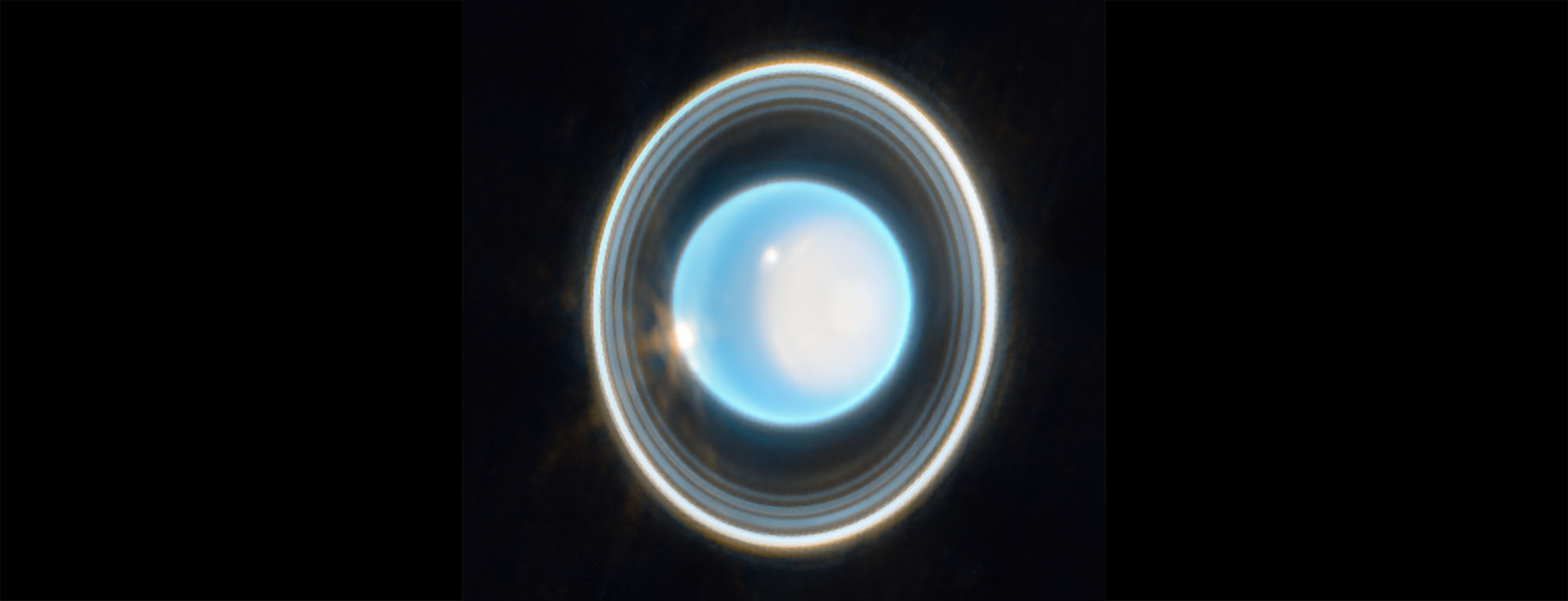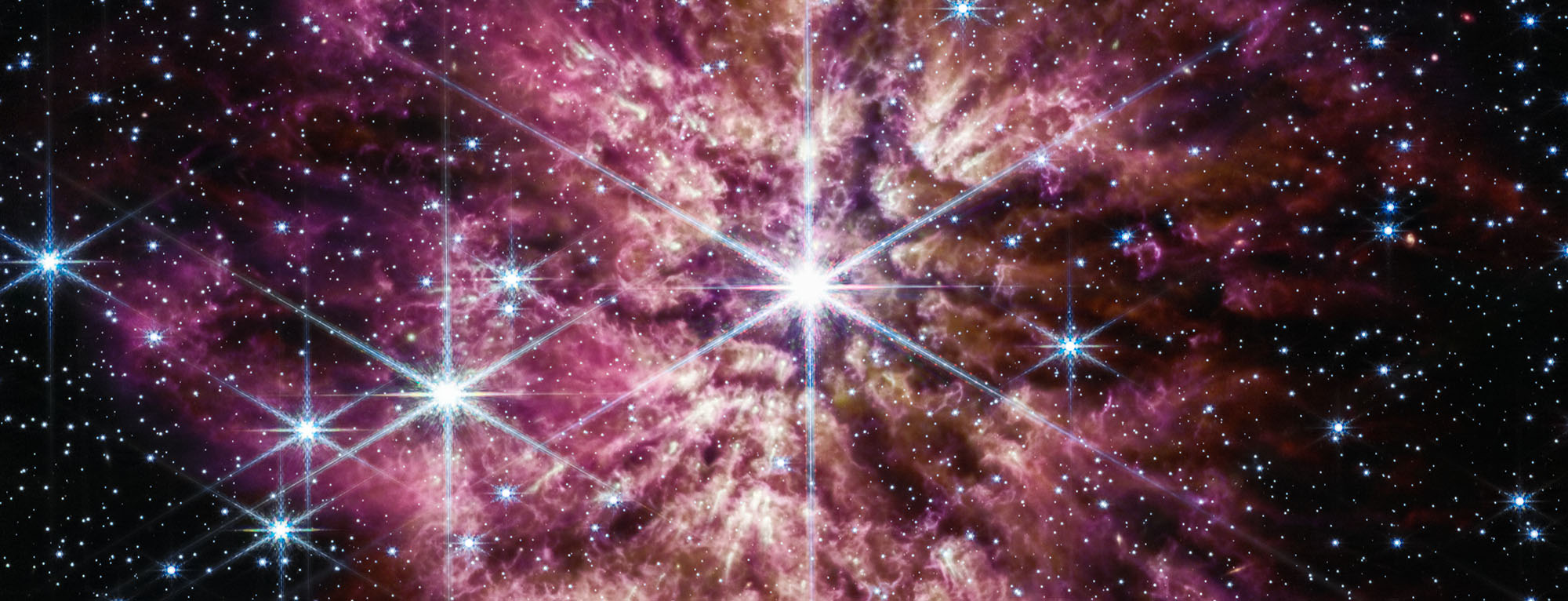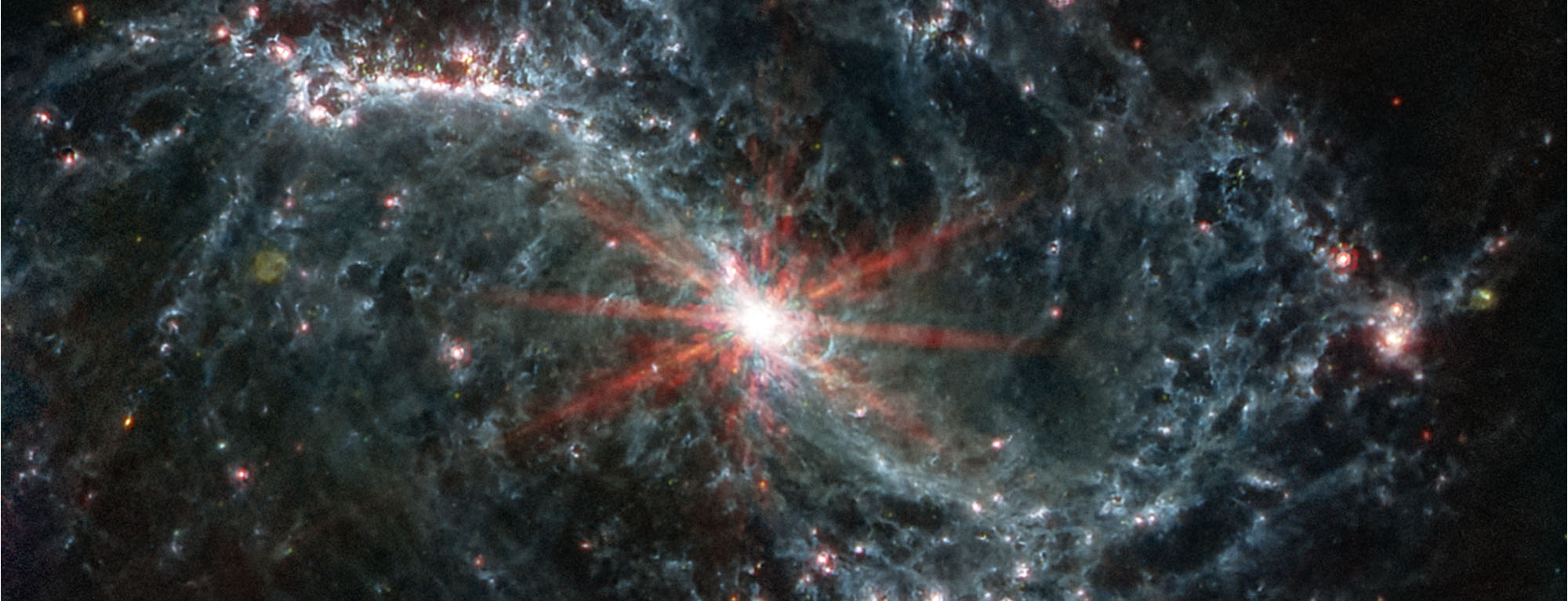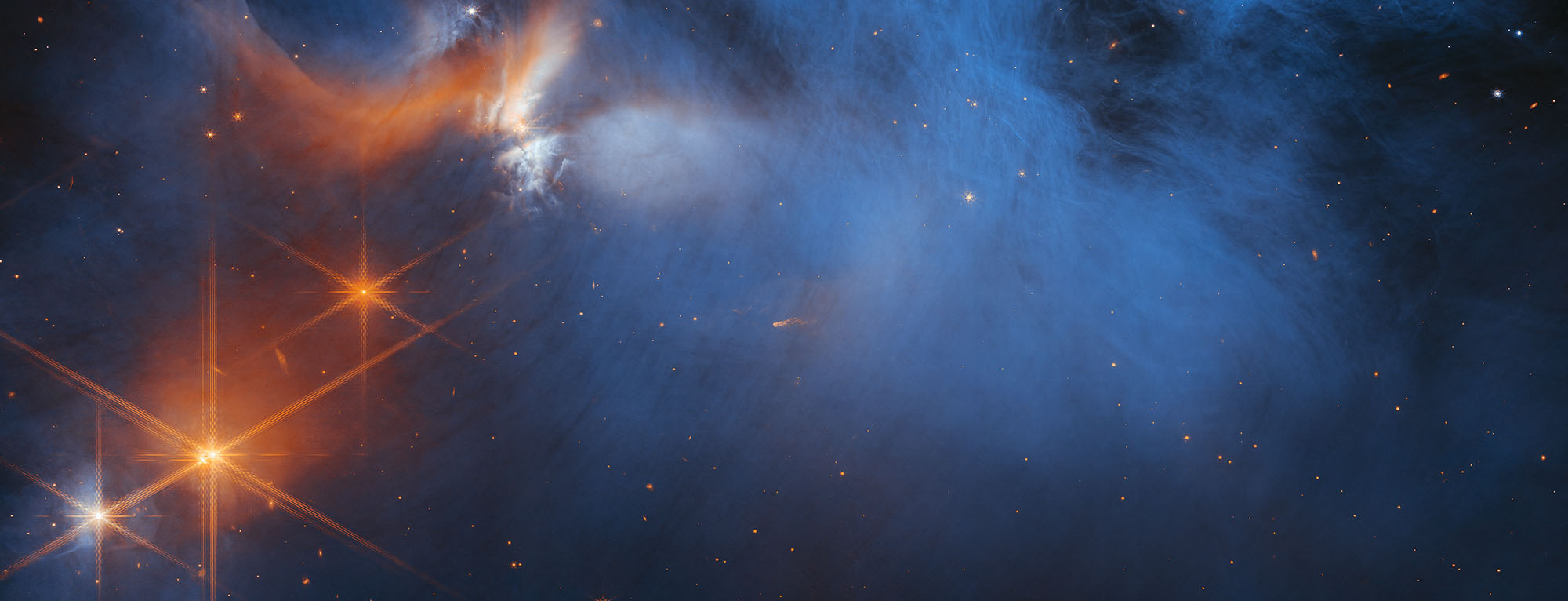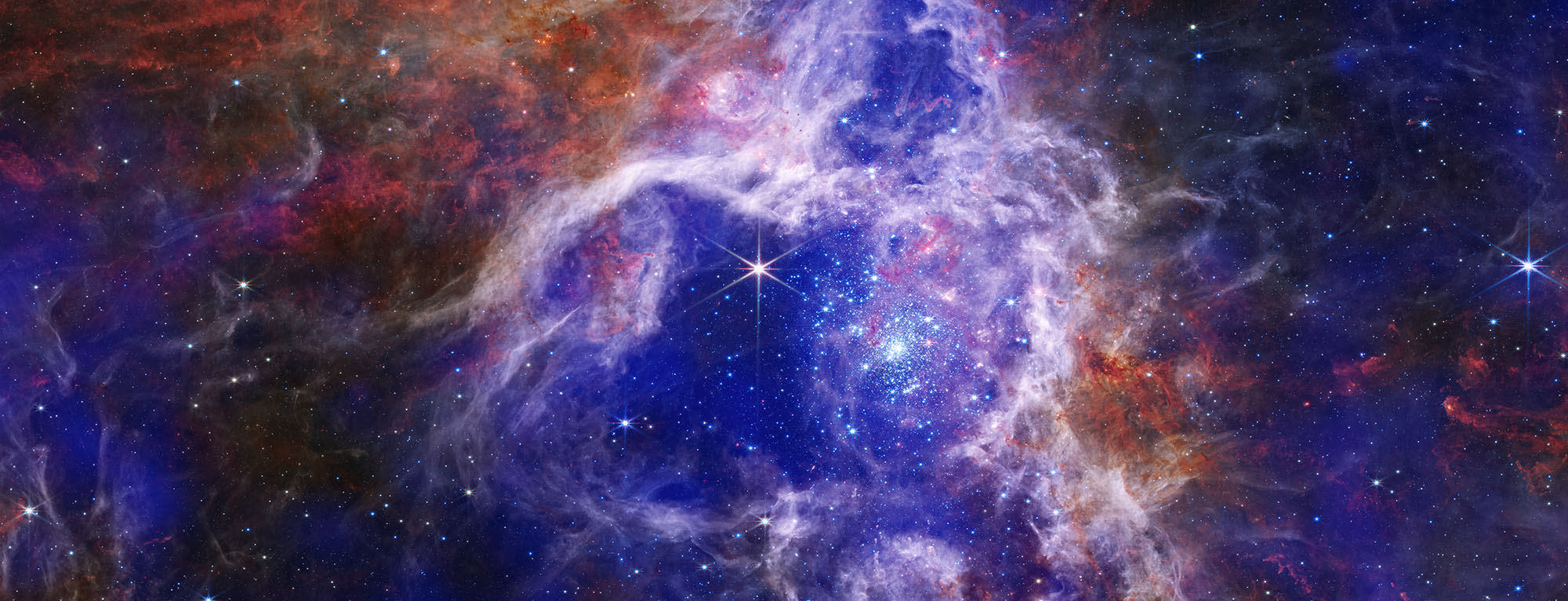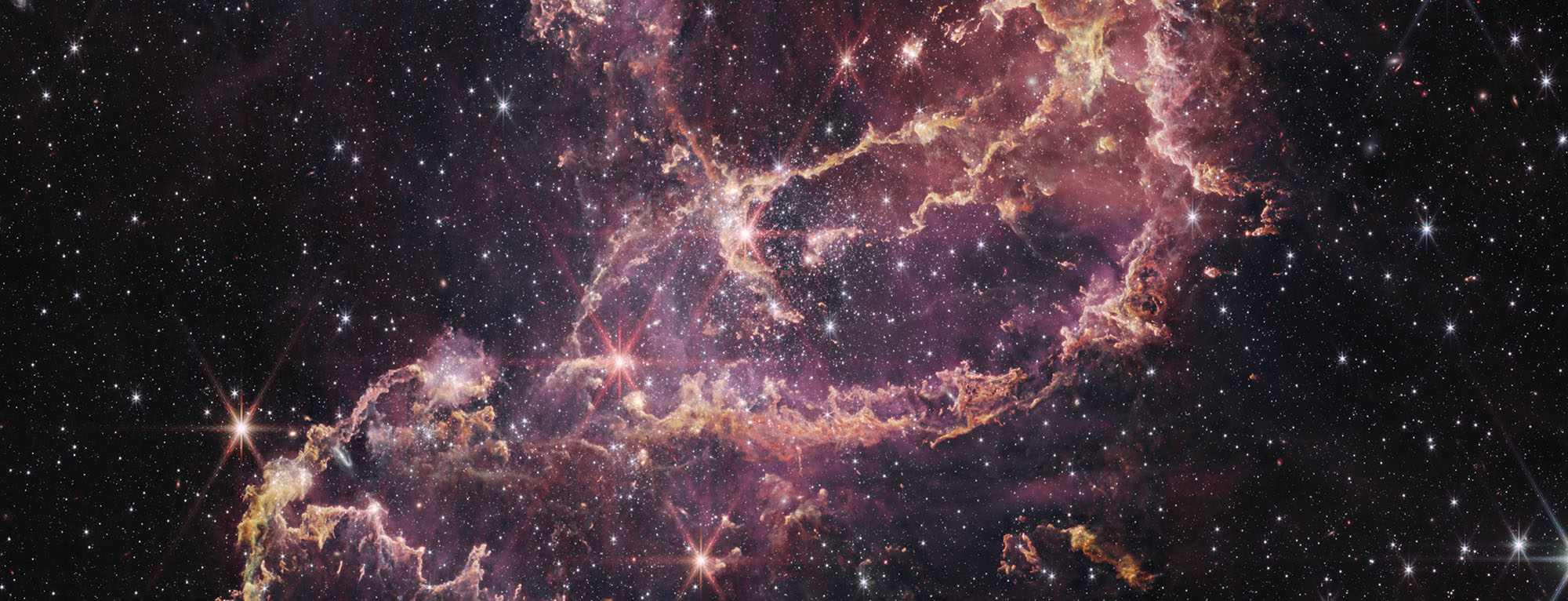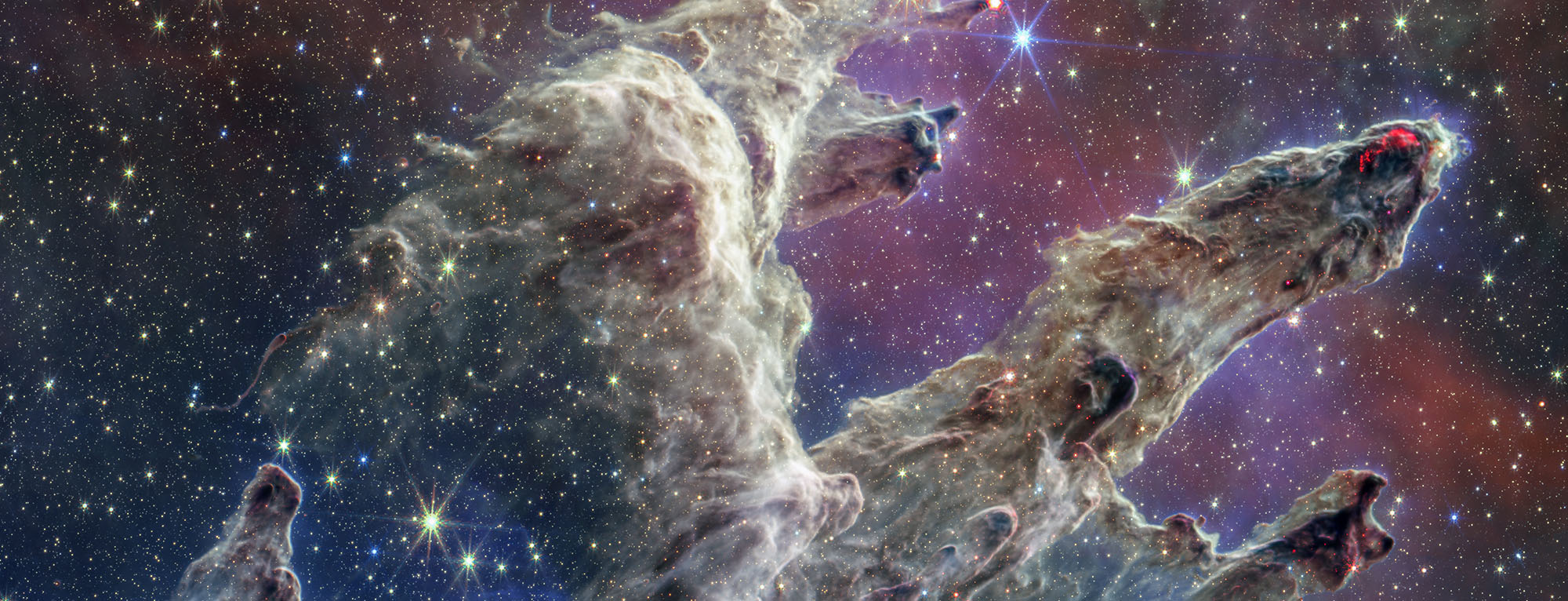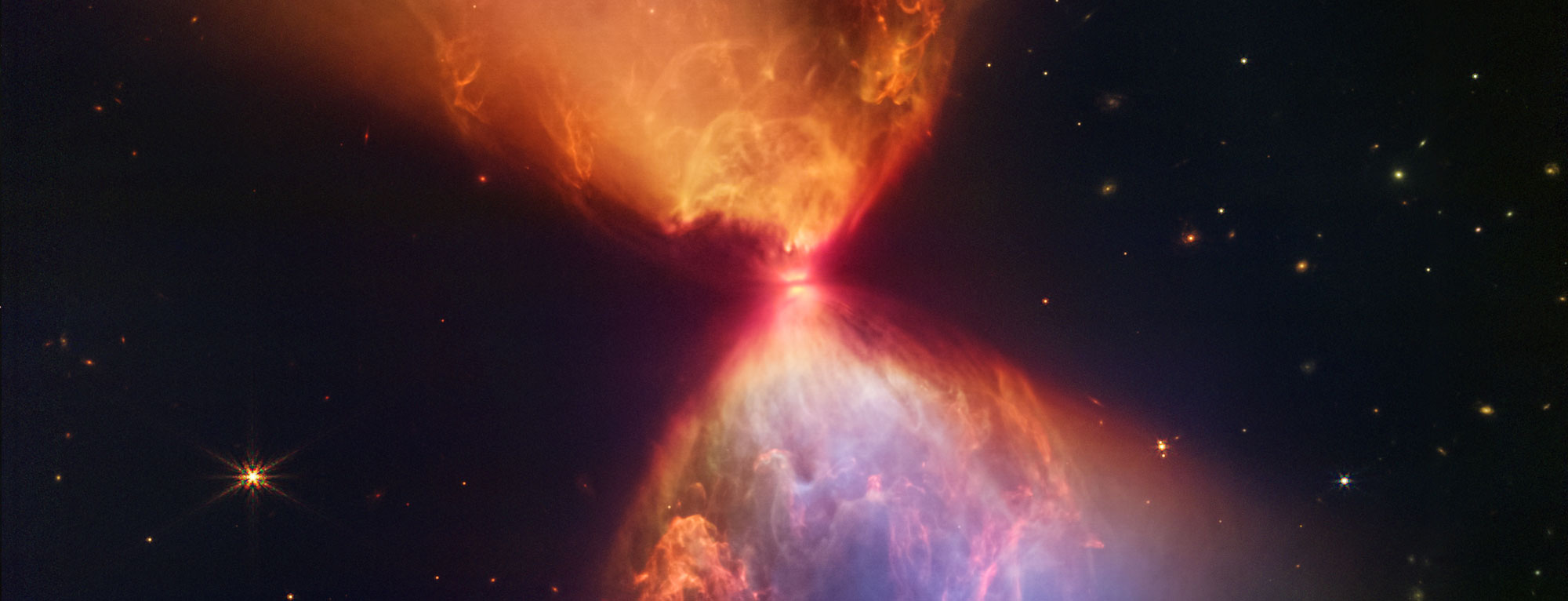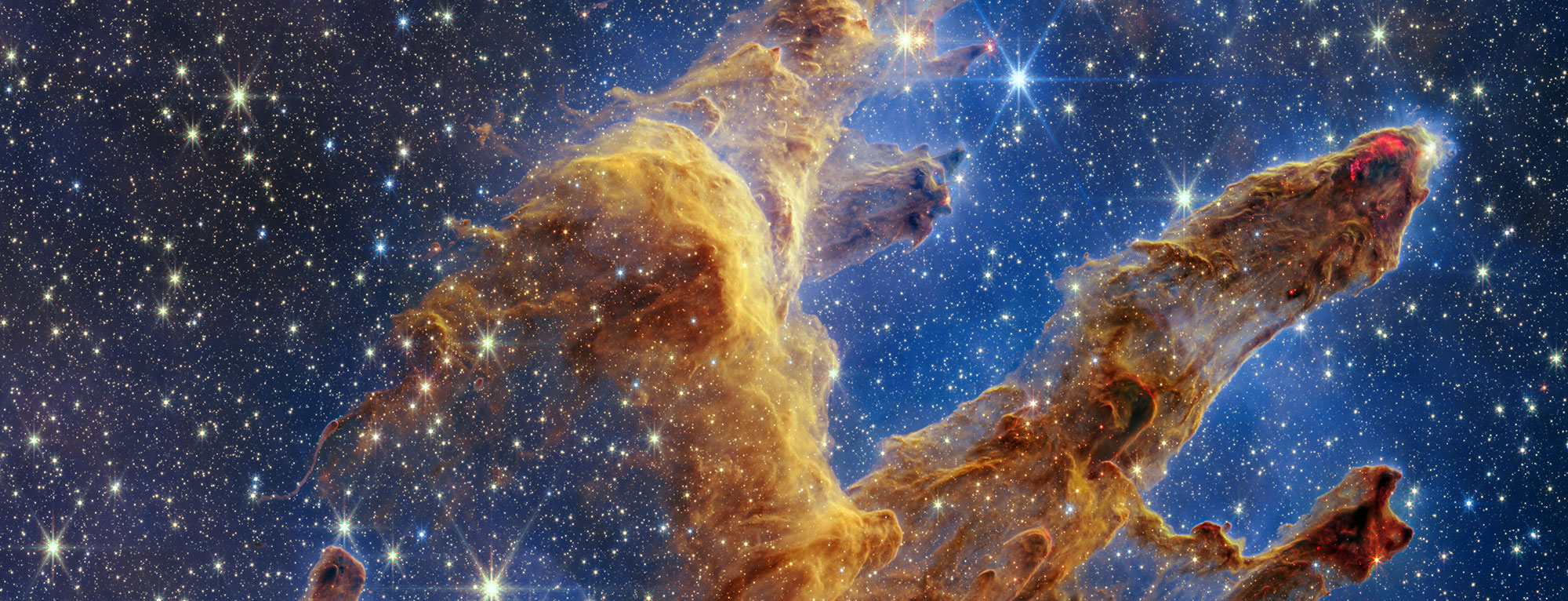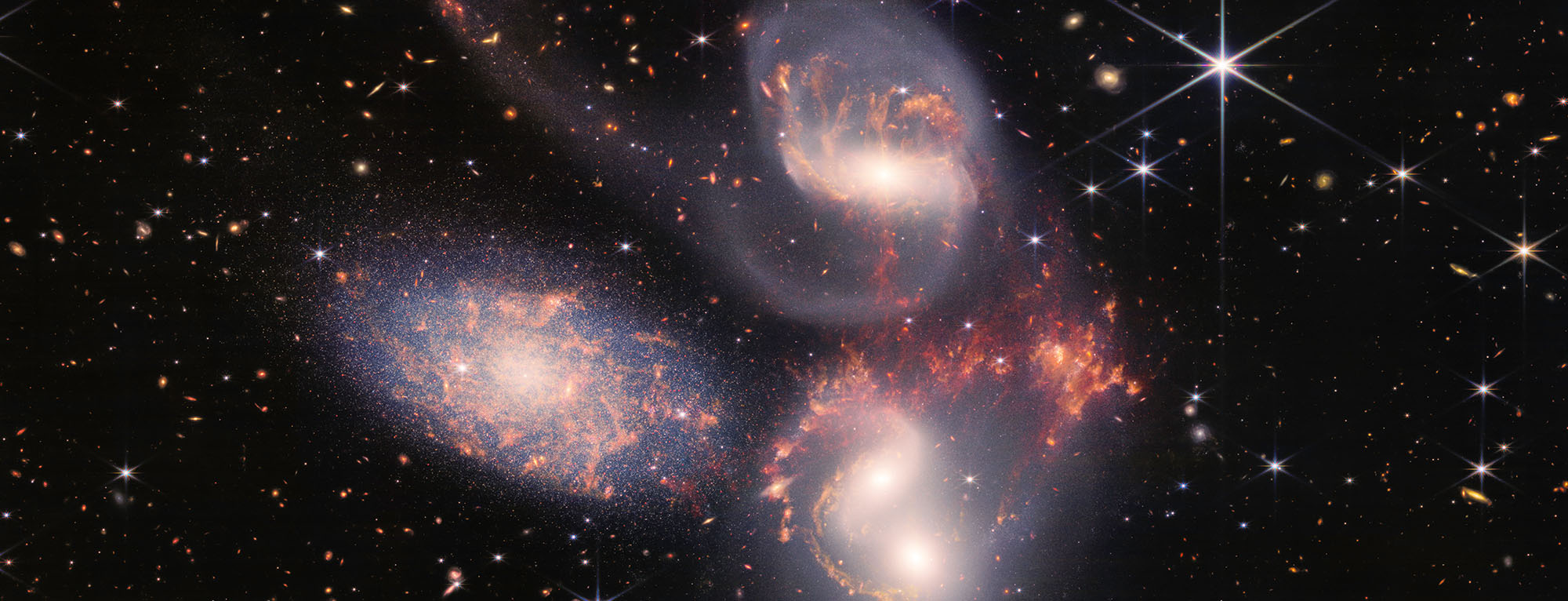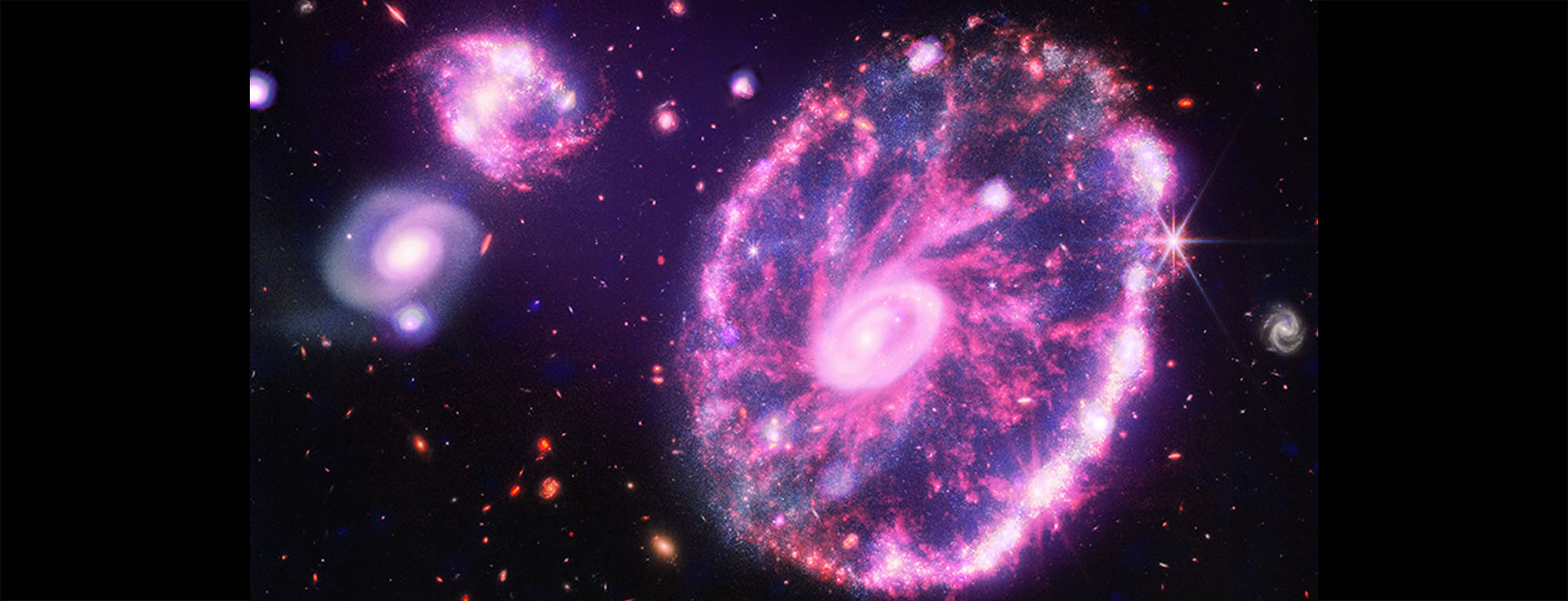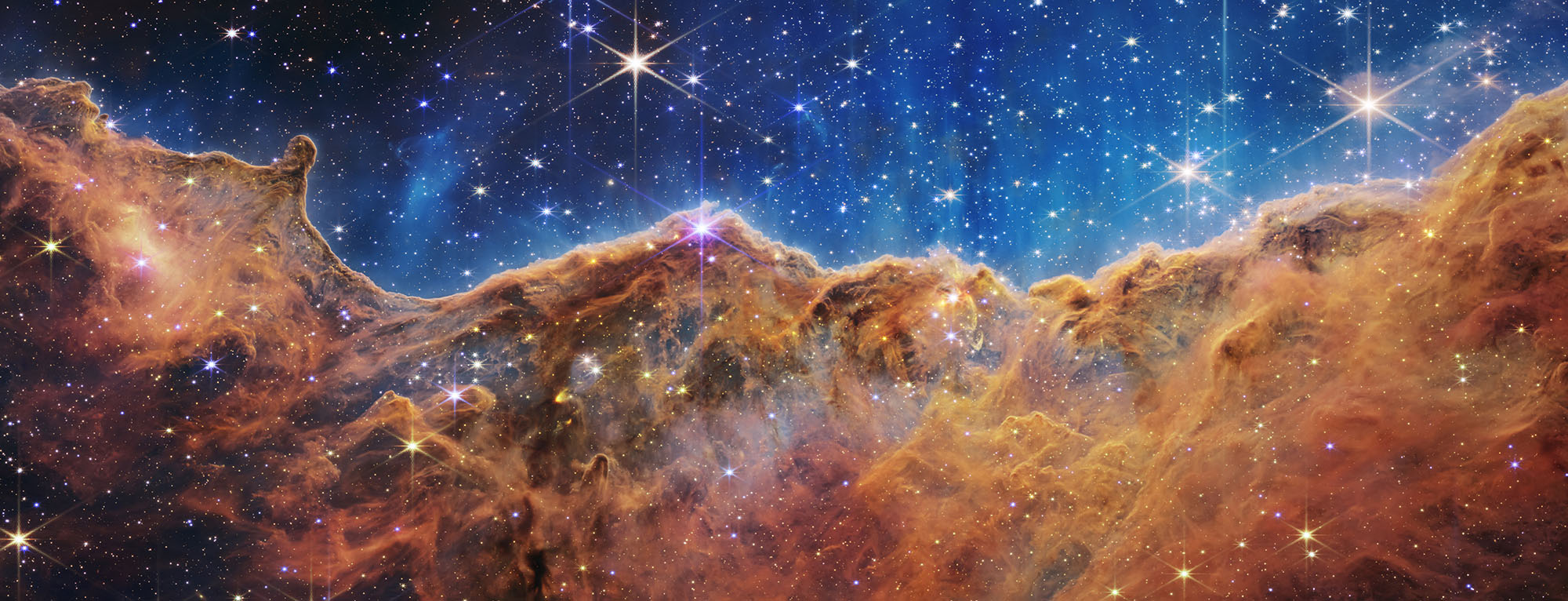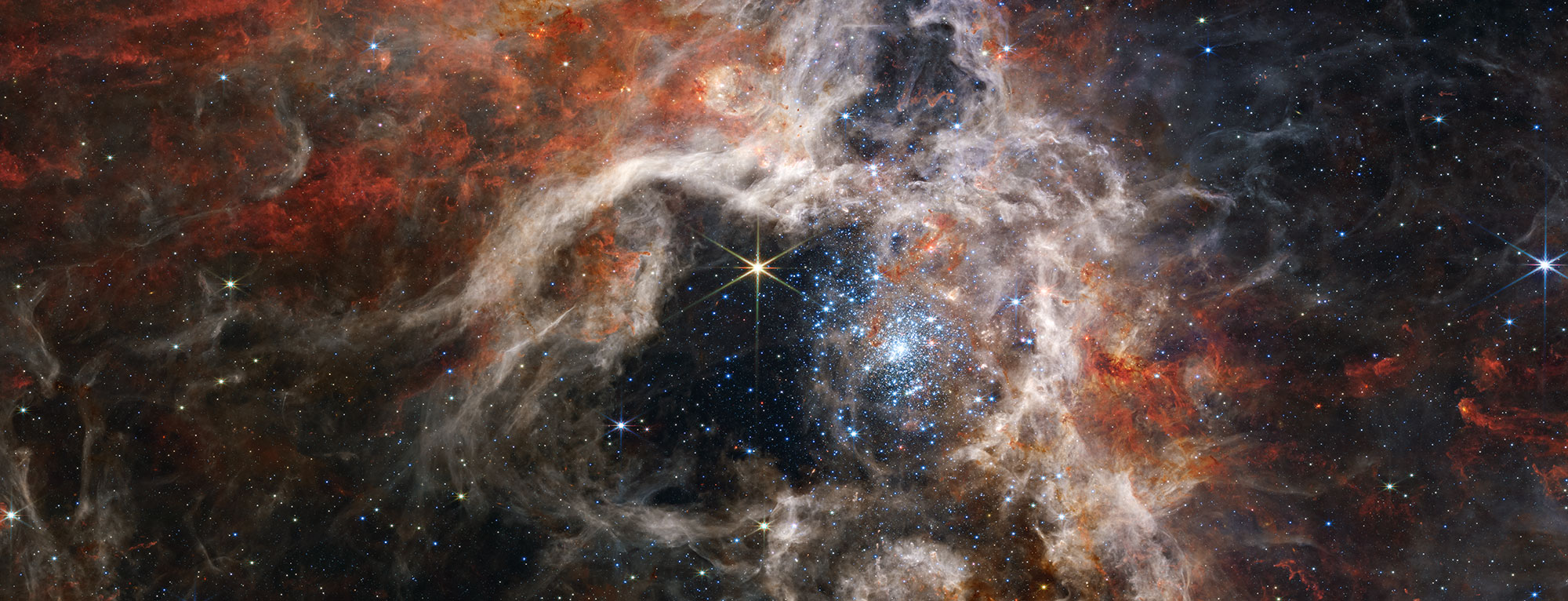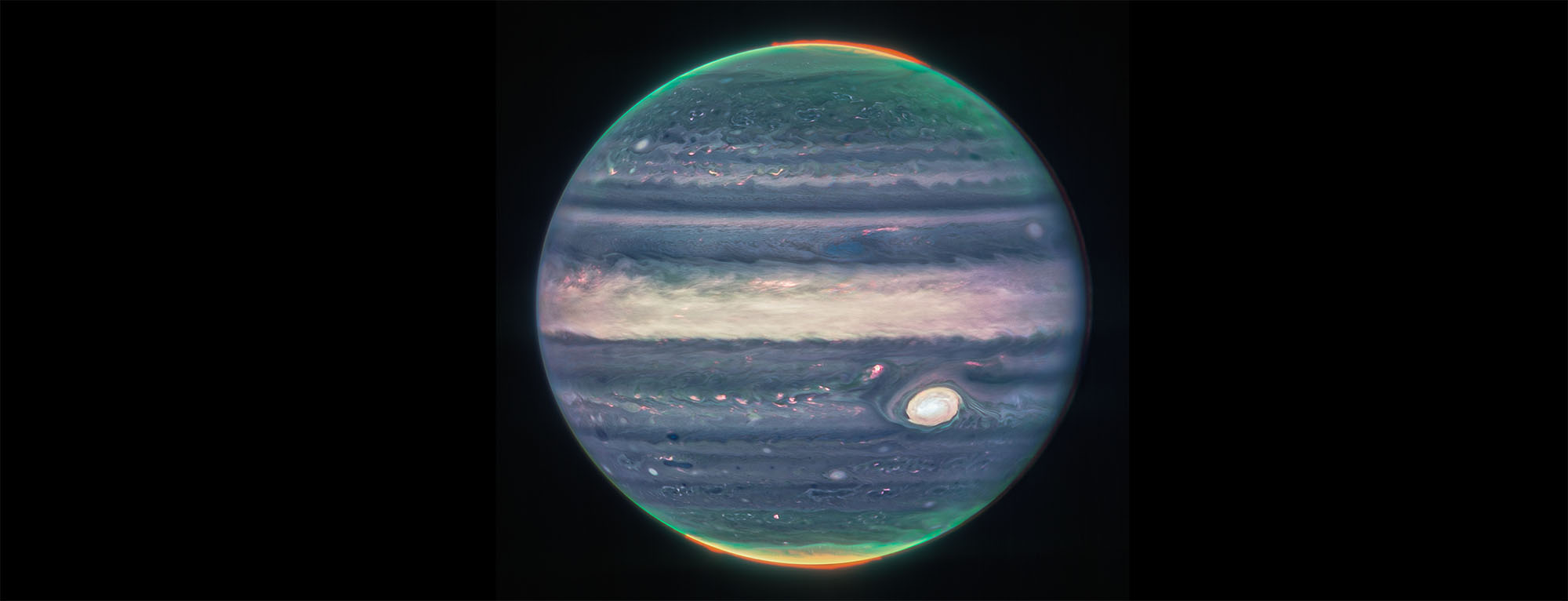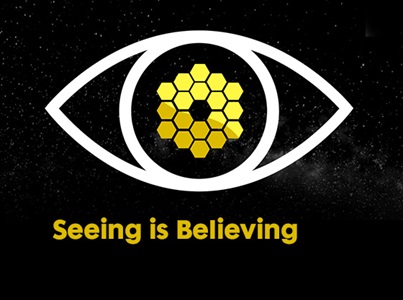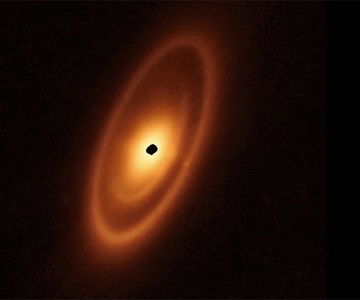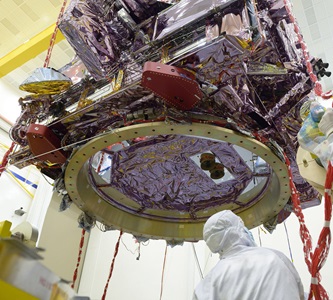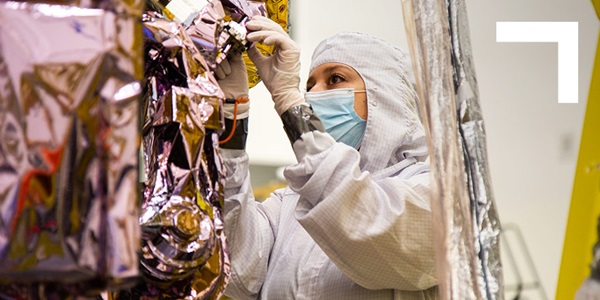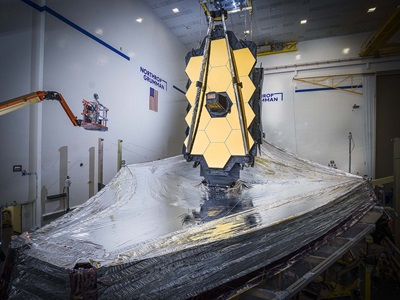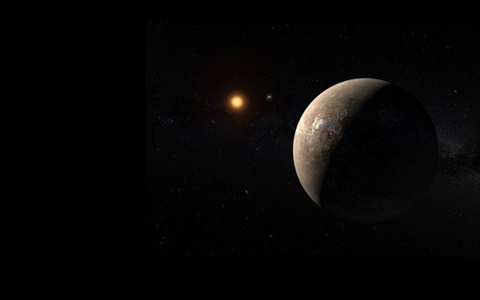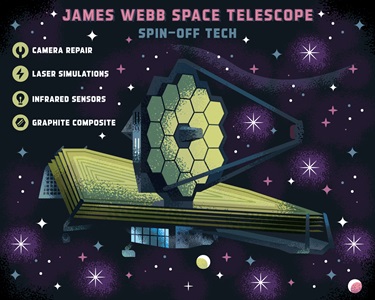James Webb Space Telescope
The largest, most complex and powerful space telescope ever built.
Beyond the Cosmos: The Voyage of NASA’s James Webb Space Telescope
Major Funding Provided by the Northrop Grumman Foundation, Narrated by Michelle Williams, and Premiering in IMAX
With major funding provided by the Northrop Grumman Foundation, in collaboration with IMAX and Oscar-nominated Nathaniel Kahn, “Deep Sky,” is a riveting documentary chronicling the awe-inspiring journey of NASA and Northrop Grumman’s high-stakes odyssey to develop and launch the groundbreaking James Webb Space Telescope. Voiced by Michelle Williams, the film offers unprecedented cosmic visuals and intimate looks at the observatory. Experience the film in IMAX theaters starting today.
What is Webb?
Northrop Grumman led the industry team for NASA’s James Webb Space Telescope (JWST), the largest, most complex and powerful space telescope ever built.
The Webb Telescope fundamentally alters our understanding of the universe. Northrop Grumman ensured that this once unthinkable achievement became a reality. Identified as a top priority for astronomy and astrophysics by the National Research Council, the Webb Telescope is a key program for NASA and the scientific community and is central to the nation's ground- and space-based astrophysics program.

What it Was Like to Work on Webb
Before we could begin to build the most complex telescope ever, we had to invent technologies that never existed before. For many Northrop Grumman employees, the opportunity to work on Webb was the opening for boundless opportunity. From a new element on the Periodic Table and embracing digital transformation to creating zero gravity here on earth, Northrop Grumman employees developed something that the entire universe can be proud of.
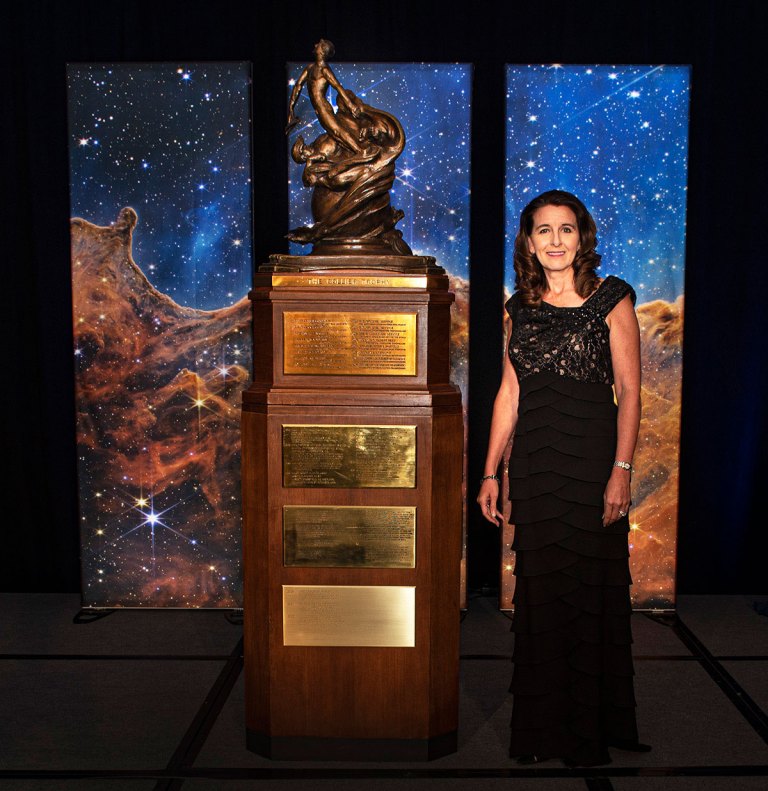
Northrop Grumman Honored with Prestigious Collier Trophy for NASA’s James Webb Space Telescope
Kathy Warden, chair, president and chief executive officer, Northrop Grumman accepted the prestigious 2022 Robert J. Collier Trophy at the annual National Aeronautic Association Collier Dinner on behalf of the company for its pioneering work on NASA’s James Webb Space Telescope.
Webb in the News
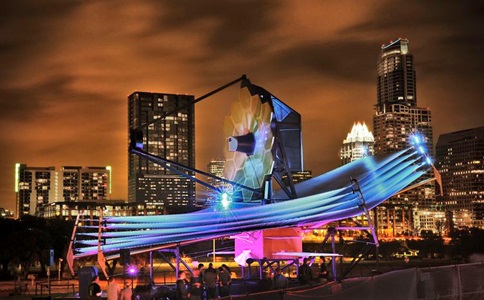
Northrop Grumman Gifts James Webb Space Telescope Full-Scale Model to the Space Foundation
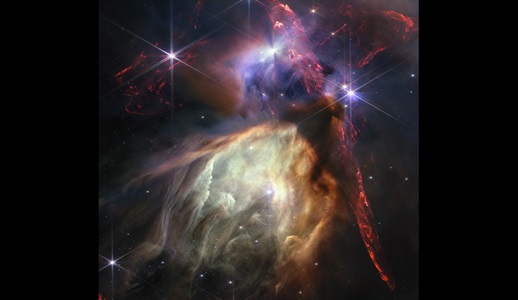
Northrop Grumman Celebrates the Anniversary of First Images that Changed Our Understanding of the Universe
(Photo Credit: NASA)
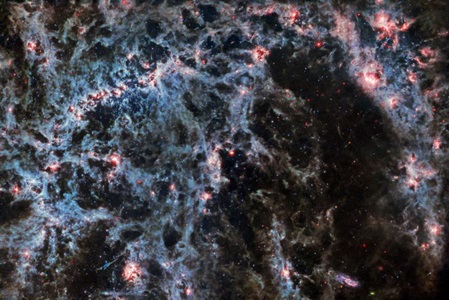
Sustaining the World’s Most Powerful Space Telescope
Northrop Grumman Provides Sustainment on the James Webb Space Telescope as the Engineering Marvel Approaches One Year Since Release of First Images
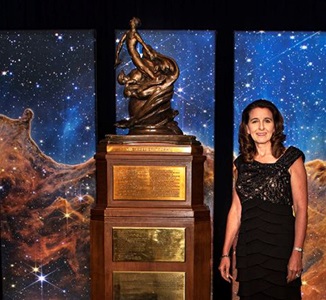
Northrop Grumman Honored with Prestigious Collier Trophy for NASA’s James Webb Space Telescope
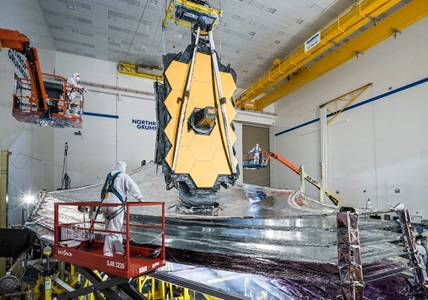
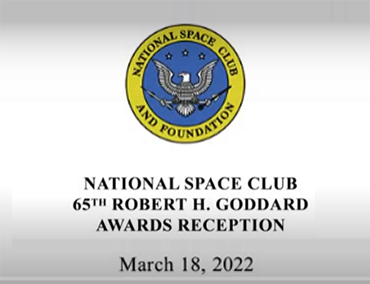
Northrop Grumman Awarded 2023 Robert H. Goddard Memorial Trophy for NASA’s James Webb Space Telescope

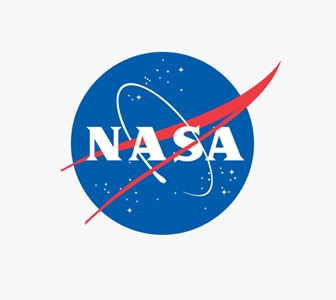
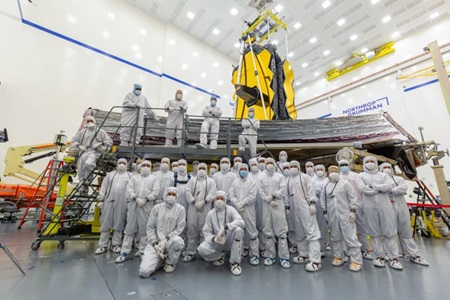
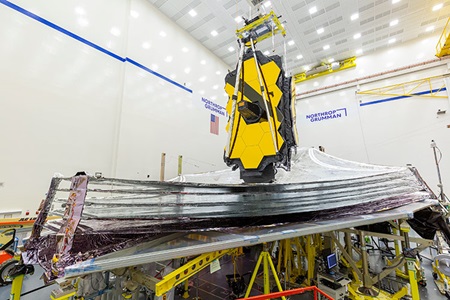
Northrop Grumman Employees Receive NASA’s Highest Honors for Building the James Webb Space Telescope
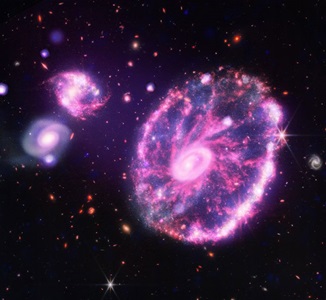
Northrop Grumman-built James Webb Space Telescope and Chandra X-Ray Observatory Help Scientists See the Universe in New Ways
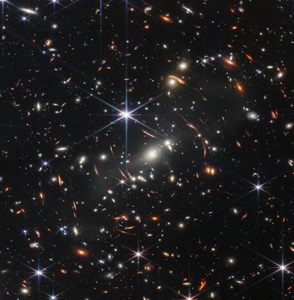
James Webb Space Telescope, Built in Partnership with Northrop Grumman, Reveals New View of the Universe

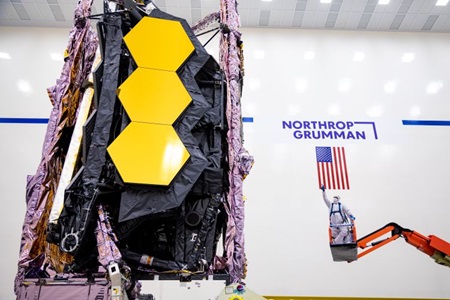
Northrop Grumman Enables James Webb Space Telescope’s Coldest Instrument to Reach Operational Temperature
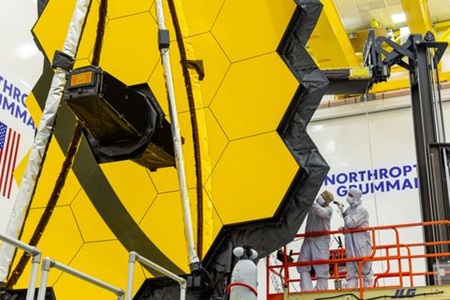
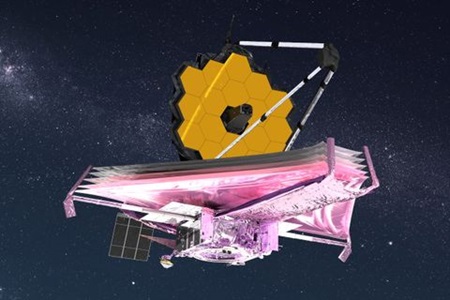

Northrop Grumman and NASA Complete Final Sunshield Deployment Test on the James Webb Space Telescope
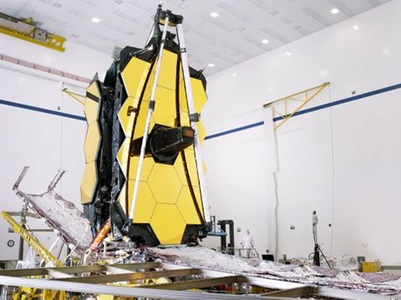
Cosmic Game Changer: Northrop Grumman and NASA’s James Webb Space Telescope
Read this fascinating series on the creation of the James Webb Space Telescope.
Images from the James Webb Space Telescope
Webb Celebrates First Year of Science With Close-up on Birth of Sun-like Stars
Credit: NASA, ESA, CSA, STScI, Klaus Pontoppidan (STScI), Image Processing: Alyssa Pagan (STScI)
Saturn’s Rings Shine in Webb’s Observations of Ringed Planet (Unlabeled)
Credit: NASA, ESA, CSA, STScI, Matt Tiscareno (SETI Institute), Matt Hedman (University of Idaho), Maryame El Moutamid (Cornell University), Mark Showalter (SETI Institute), Leigh Fletcher (University of Leicester), Heidi Hammel (AURA). Image processing: J. DePasquale (STScI)
Webb Makes First Detection of Crucial Carbon Molecule (Orion Bar NIRCam Image)
Credit: ESA/Webb, NASA, CSA, M. Zamani (ESA/Webb), PDRs4ALL ERS Team
Webb Peers Behind the Bars of NGC 5068 (MIRI Version)
Credit: ESA/Webb, NASA & CSA, J. Lee and the PHANGS-JWST Team
NASA's Chandra, Webb Combine for Arresting Views (NGC 346)
Credit: X-ray: Chandra: NASA/CXC/SAO, XMM: ESA/XMM-Newton; IR: JWST: NASA/ESA/CSA/STScI, Spitzer: NASA/JPL/CalTech; Optical: Hubble: NASA/ESA/STScI, ESO; Image Processing: L. Frattare, J. Major, and K. Arcand
Nearby Planetary System Seen in Breathtaking Detail, Fomalhaut Dusty Debris Disk (MIRI Image)
Credit: NASA, ESA, CSA, András Gáspár (University of Arizona), Alyssa Pagan (STScI)
Webb Reveals Never-Before-Seen Details in Cassiopeia A
Credit: NASA, ESA, CSA, D. Milisavljevic (Purdue), T. Temim (Princeton), I. De Looze (Ghent University), with image processing by J. DePasquale (STScI)
NASA’s Webb Scores Another Ringed World With New Image of Uranus
Credit: NASA, ESA, CSA, STScI, with image processing by Joseph DePasquale (STSci)
NASA’s Webb Telescope Captures Rarely Seen Prelude to Supernova (NIRCam and MIRI Image)
Credit: NASA, ESA, CSA, STScI, Webb ERO Production Team
NASA’s Webb Reveals Intricate Networks of Gas and Dust in Nearby Galaxies
Credit: Science - NASA, ESA, CSA, and J. Lee (NOIRLab). Image processing - A. Pagan (STScI)
Webb Unveils Dark Side of Pre-stellar Ice Chemistry
Image Credit: NASA, ESA, CSA, and M. Zamani (ESA). Science: M. K. McClure (Leiden Observatory), F. Sun (Steward Observatory), Z. Smith (Open University), and the Ice Age ERS Team
The Enduring Stellar Lifecycle in 30 Doradus (Composite: Infrared + X-ray)
Image credit: X-ray: NASA/CXC/Penn State Univ./L. Townsley et al.; IR: NASA/ESA/CSA/STScI/JWST ERO Production Team
NASA’s Webb Uncovers Star Formation in Cluster’s Dusty Ribbons, NGC 346 (NIRCam)
Credits: NASA, ESA, CSA, O. Jones (UK ATC), G. De Marchi (ESTEC), and M. Meixner (USRA), with image processing by A. Pagan (STScI), N. Habel (USRA), L. Lenkic (USRA) and L. Chu (NASA/Ames)
Pillars of Creation (NIRCam and MIRI Composite Image)
SCIENCE: NASA, ESA, CSA, STScI. IMAGE PROCESSING: Joseph DePasquale (STScI), Alyssa Pagan (STScI), Anton M. Koekemoer (STScI)
NASA’s Webb Catches Fiery Hourglass as New Star Forms
Image credit: NASA, ESA, CSA, STScI
The Pillars of Creation (Webb NIRCam Image)
Image Credit: NASA, ESA, CSA, STScI
NASA's Chandra Adds X-ray Vision to Webb Images - Stephan's Quintet Composite
Image credits: X-ray: NASA/CXC/SAO; IR (Spitzer): NASA/JPL-Caltech; IR (Webb): NASA/ESA/CSA/STScI
NASA's Chandra Adds X-ray Vision to Webb Images - Cartwheel Galaxy Composite
Image credits: X-ray: NASA/CXC; IR: NASA/ESA/CSA/STScI
NASA's Chandra Adds X-ray Vision to Webb Images - Carina Nebula Composite
Image credits: X-ray: NASA/CXC/Univ. Observ. Munich/T. Preibisch et al.; IR: NASA/ESA/CSA/STScI
A Cosmic Tarantula, Caught by NASA’s Webb
Image Credit: NASA, ESA, CSA, STScI, Webb ERO Production Team
Webb’s Jupiter Images Showcase Auroras, Hazes
Image credit: Webb NIRCam composite image of Jupiter from three filters and alignment due to the planet’s rotation. Credit: NASA, ESA, CSA, Jupiter ERS Team; image processing by Judy Schmidt
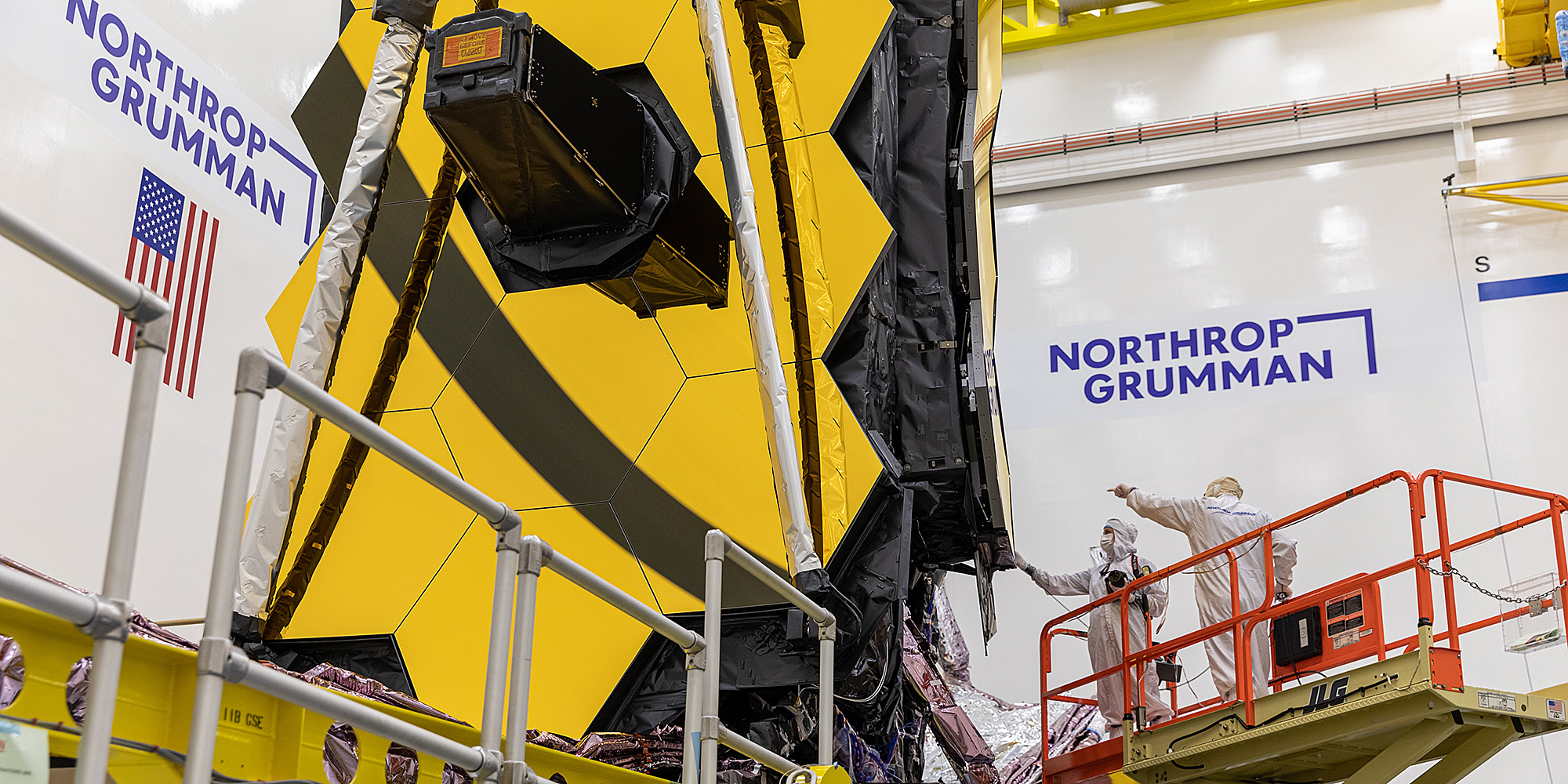
Discover Webb
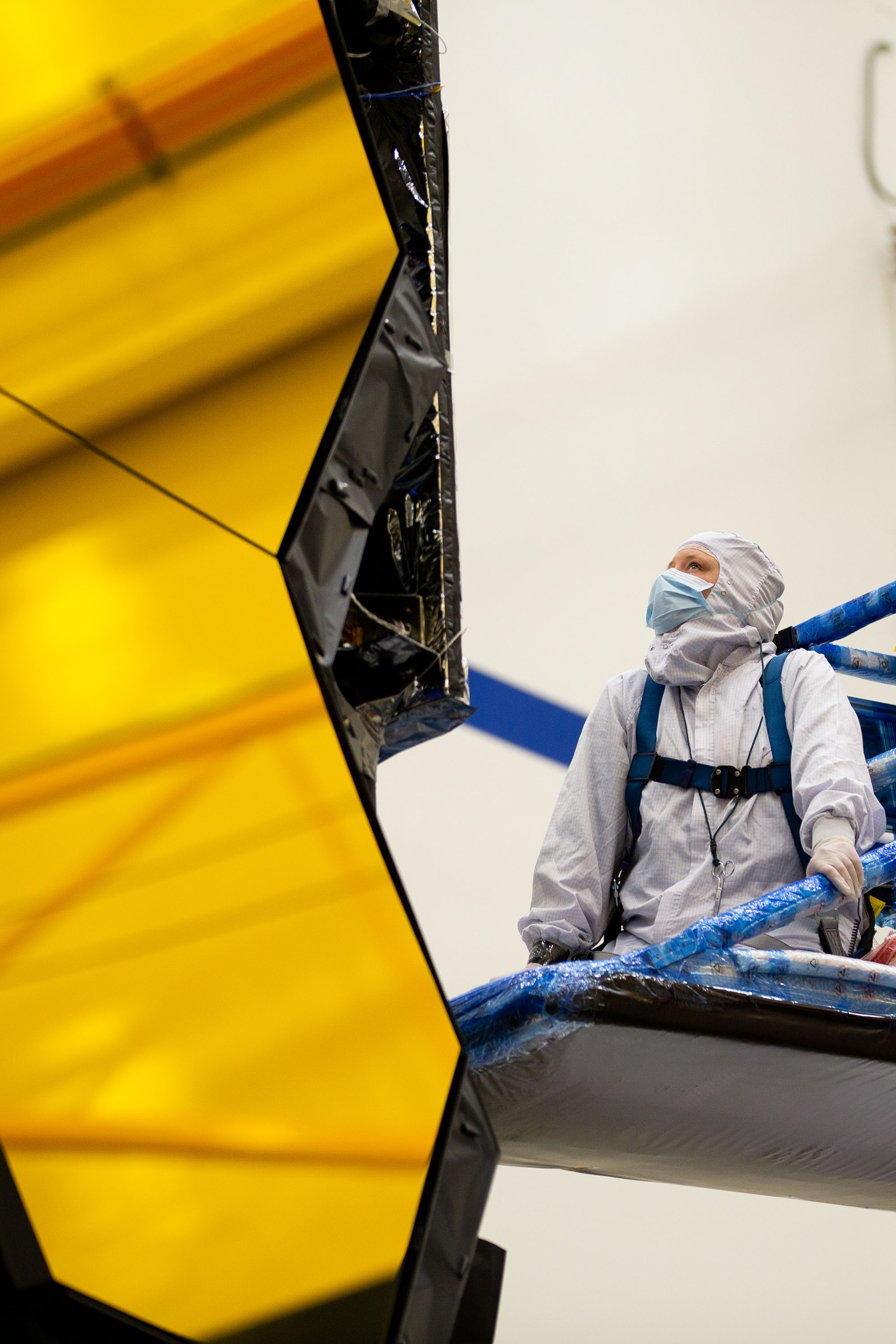
How Webb is Defining Possible
NASA's Webb Telescope is using its superb angular resolution and near-infrared instruments to discover and study planetary systems similar to our own, analyzing the molecular composition of extrasolar planets’ atmospheres and directly imaging Jupiter-size planets orbiting nearby stars.
Webb is making observations once thought to be impossible; multiple new technologies had to be invented simply to build it. The groundbreaking mirror and powerful instruments are being used to discover and study distant planetary systems.
Webb is also looking deep into the past, to a time when the earliest stars and galaxies were born. By extending our knowledge of the cosmos, the Webb telescope will help us answer the compelling questions, "How did we get here?" and "Are we alone?"
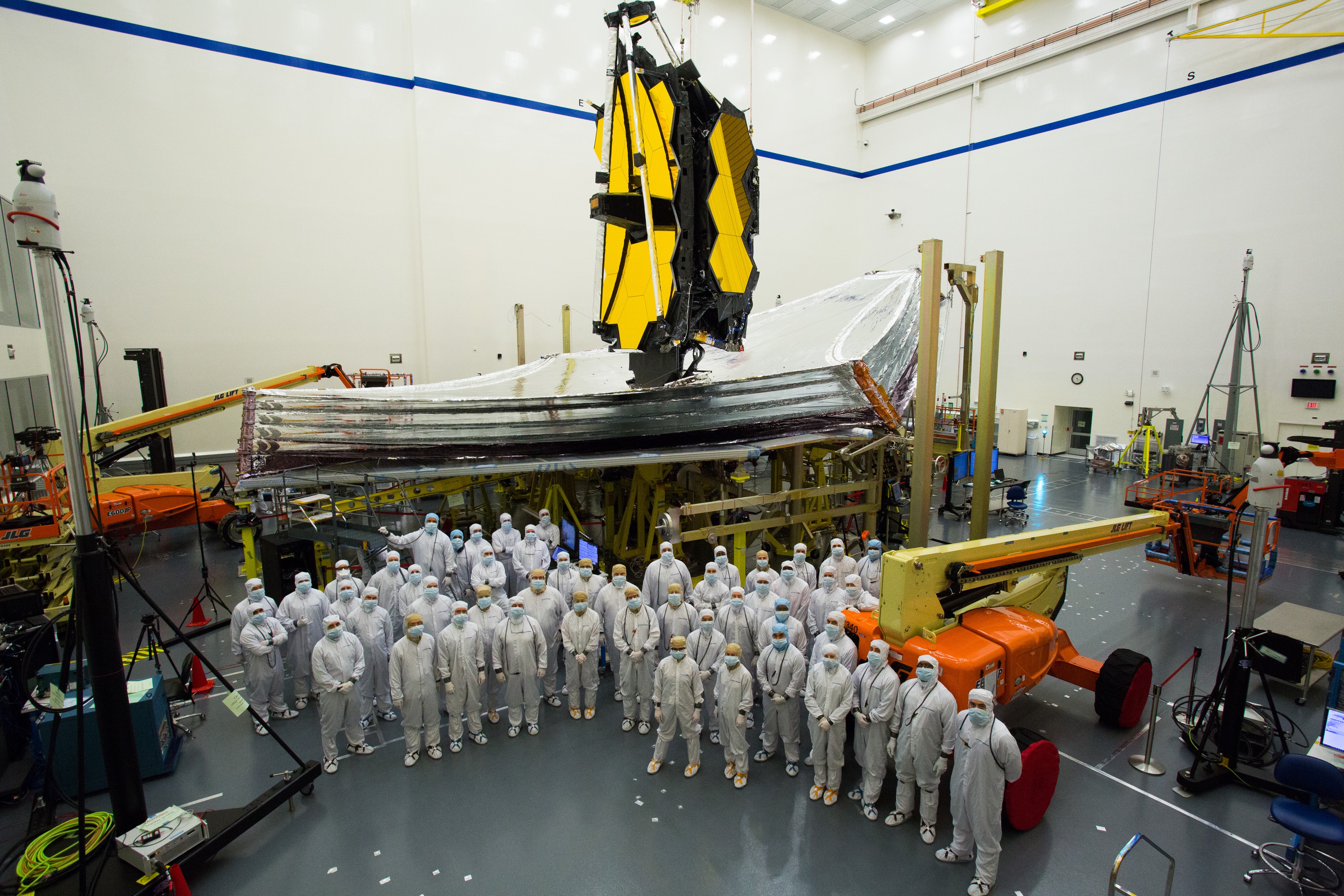
The Webb Team
NASA led the international partnership that included the European Space Agency and the Canadian Space Agency. NASA’s Goddard Space Flight Center is managing the Webb Telescope project, and the Space Telescope Science Institute is responsible for science and mission operations, as well as ground station development.
As the prime contractor to develop the James Webb Space Telescope, Northrop Grumman designed and built the deployable sunshield, provided the spacecraft and integrated the total system. The observatory subsystems were developed by a Northrop Grumman-led team with vast experience in developing space-based observatories.
- Ball Aerospace: Optical design, mirrors, wavefront sensing, and control design and algorithms
- Harris Corporation: Optical telescope integration and testing
- University of Arizona: Near-Infrared Camera
- European Space Agency (ESA): Near-Infrared Spectrograph
- Jet Propulsion Laboratory (JPL), ESA: Mid-Infrared Instrument
- Canadian Space Agency (CSA): Fine Guidance Sensor with Tunable Filter Module

